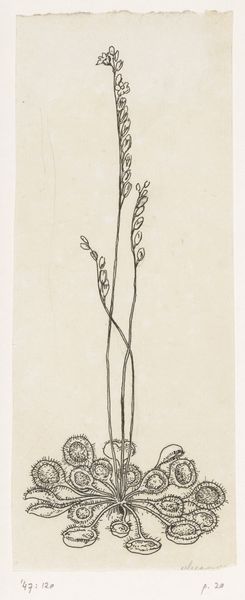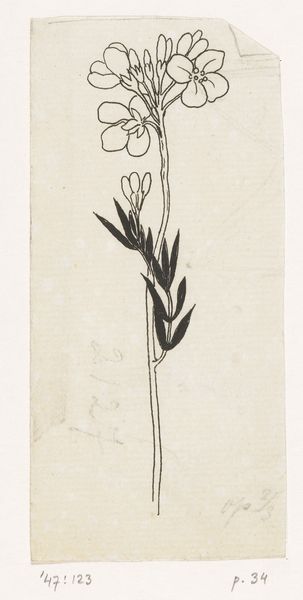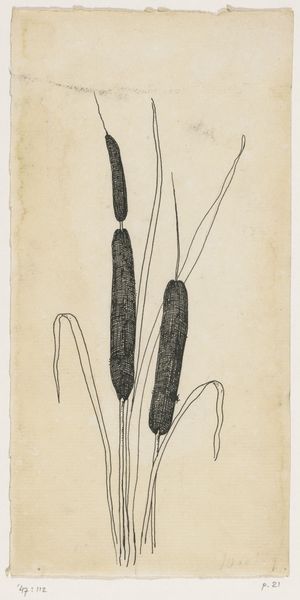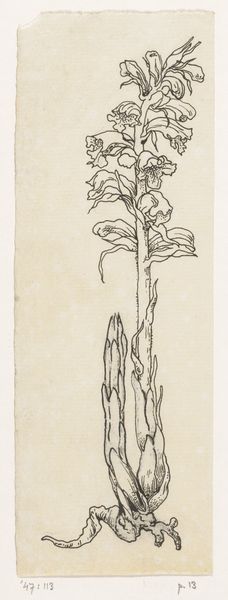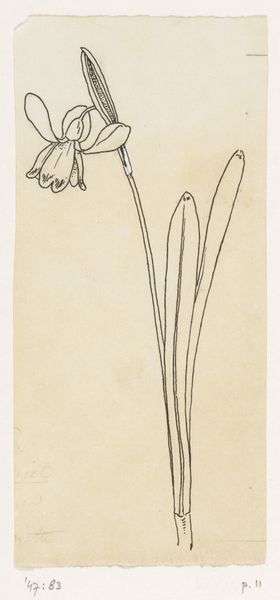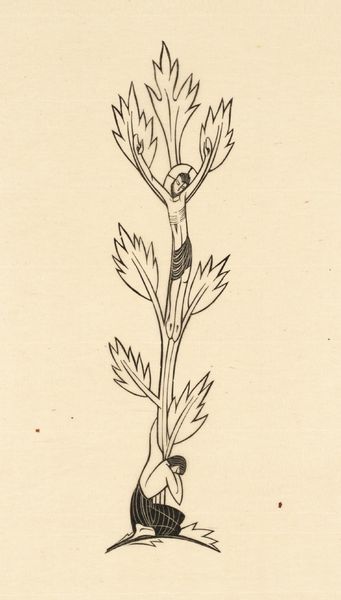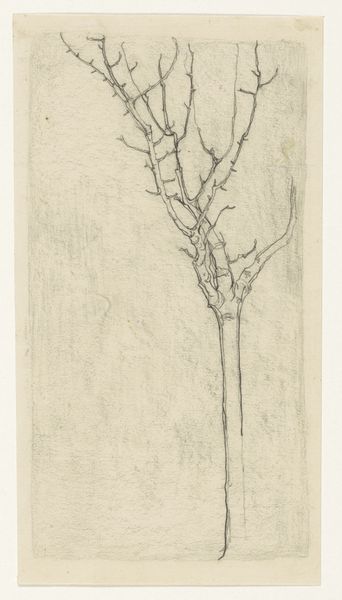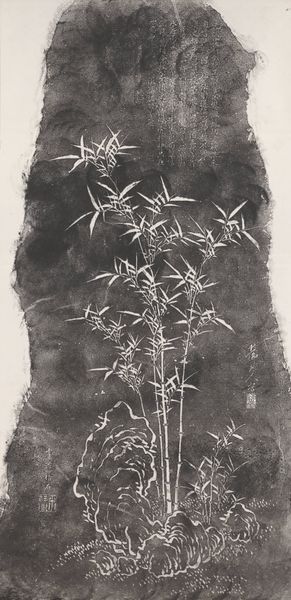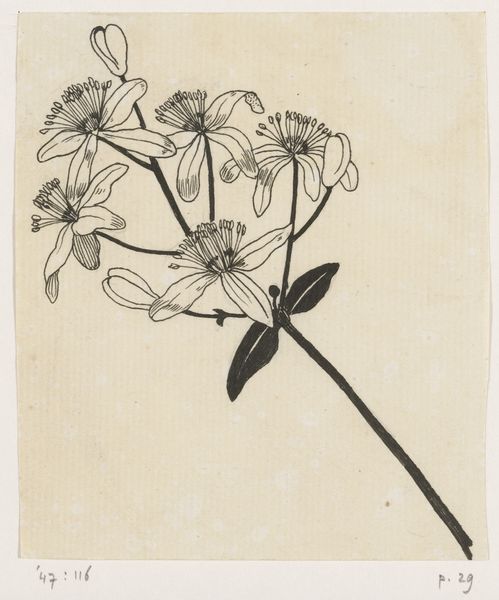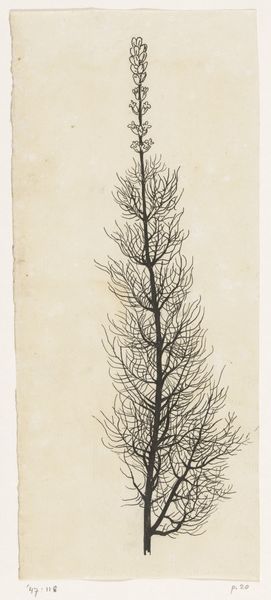
Dimensions: height 412 mm, width 250 mm
Copyright: Rijks Museum: Open Domain
Curator: We're looking at "Twee aren haver"—"Two ears of oats"—created by Theo Nieuwenhuis sometime between 1876 and 1951. It's a deceptively simple ink drawing on paper. Editor: It's spare, isn't it? Almost aggressively minimal. It feels like a haiku, distilling the very essence of… well, oats. Curator: Precisely. The organic theme is quite central. Nieuwenhuis’s line work is wonderfully suggestive, wouldn’t you say? How these oat stalks reach upwards, practically vibrating with implied movement! It really borders impressionism. Editor: Oats themselves have always been a powerful symbol. In agrarian societies, they represented nourishment, prosperity. It's primal: this drawing reminds me of that intrinsic connection between humans and the harvest. Curator: Yes, there's an earthy, honest quality. Beyond sustenance, oats represented a source of folk medicine. In Celtic cultures especially. I love the confident brevity of it. Editor: It’s very elemental, like he wanted to get to the heart of the matter. If the picture could speak, it might tell a quiet, unassuming story. Something about perseverance perhaps, about standing tall even when surrounded by vast fields of your kin. Or, you know, maybe it's just oats! Curator: Perhaps that's what he wants to suggest, in all its quiet majesty. What do you think he hoped it would reveal to future viewers? Editor: Maybe simply a moment of serenity? In a world of bombast, I’ll settle for the peace found contemplating two ears of oats. Curator: I suspect the artist would appreciate your sensibility. The subtle joy of seeing and feeling something deeply is indeed a thing worth appreciating.
Comments
No comments
Be the first to comment and join the conversation on the ultimate creative platform.
